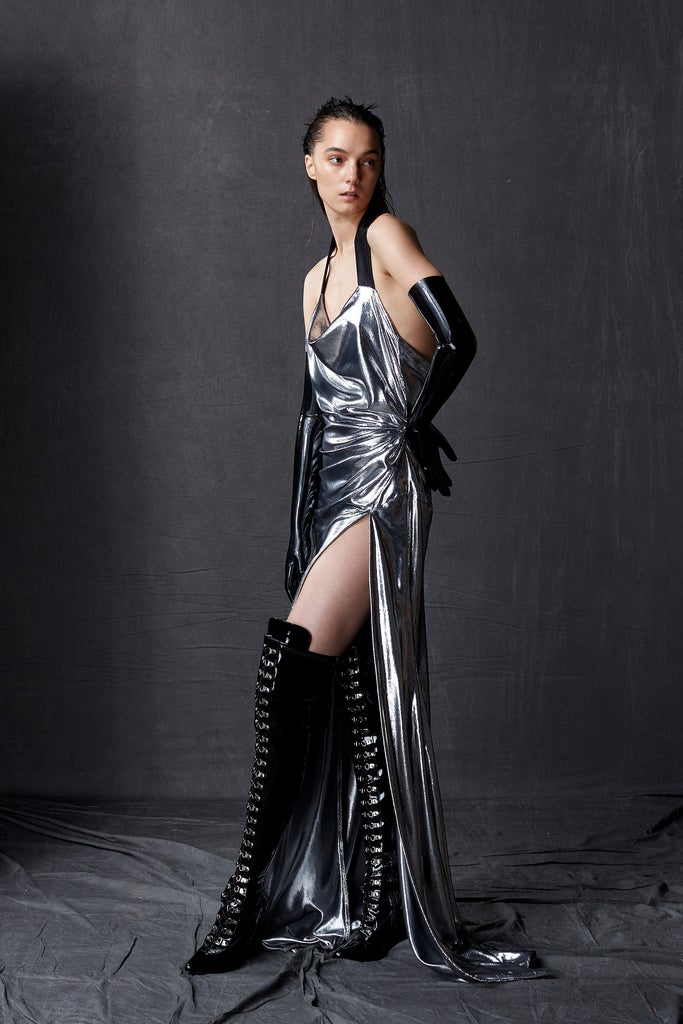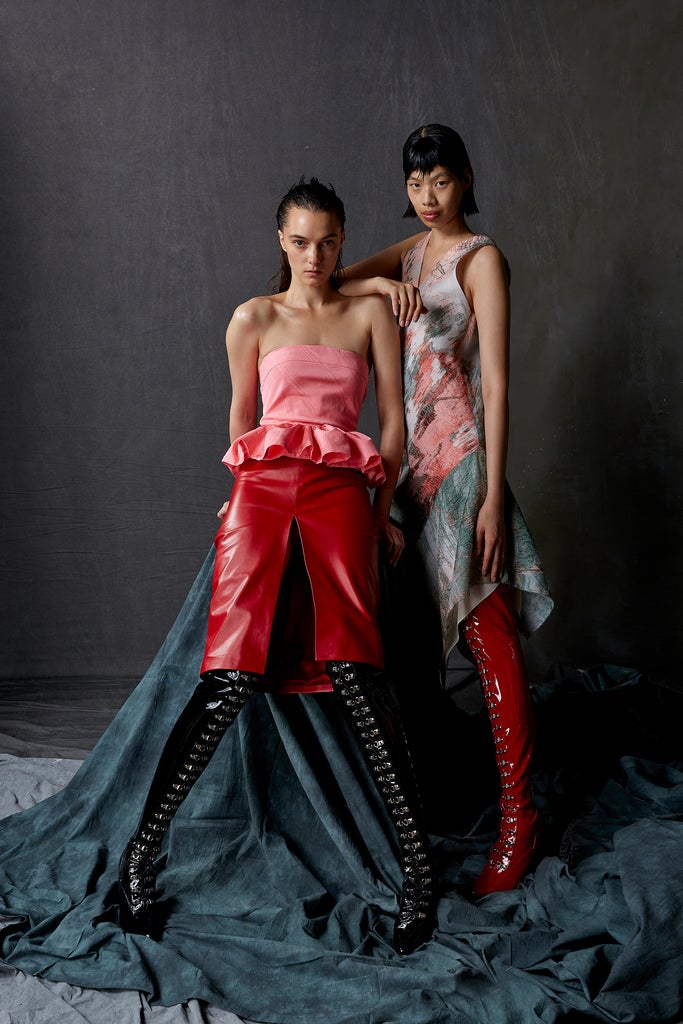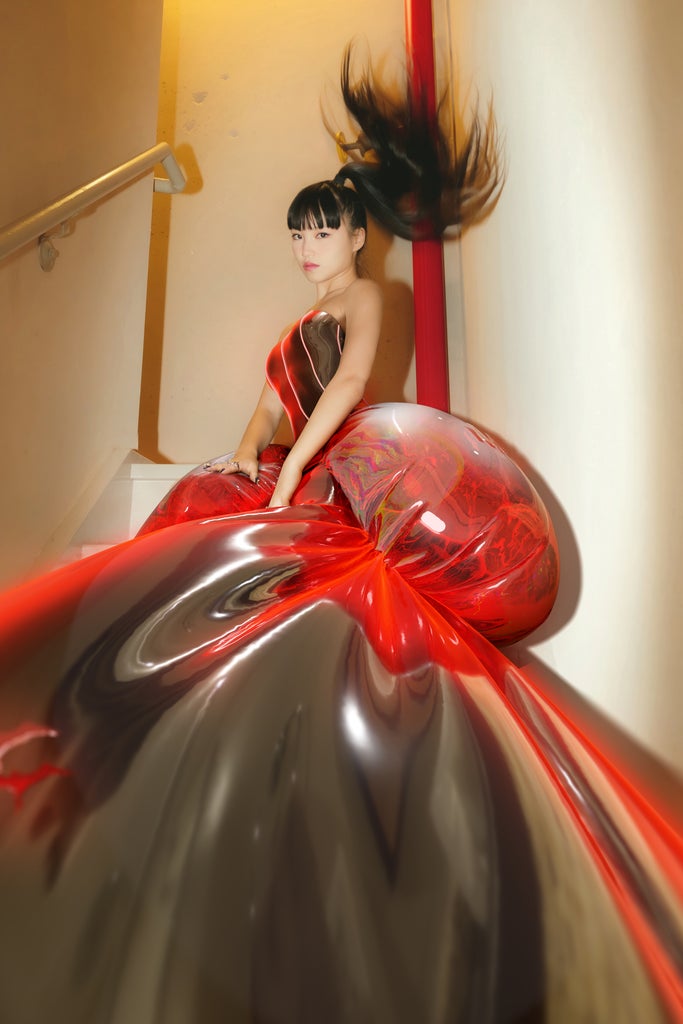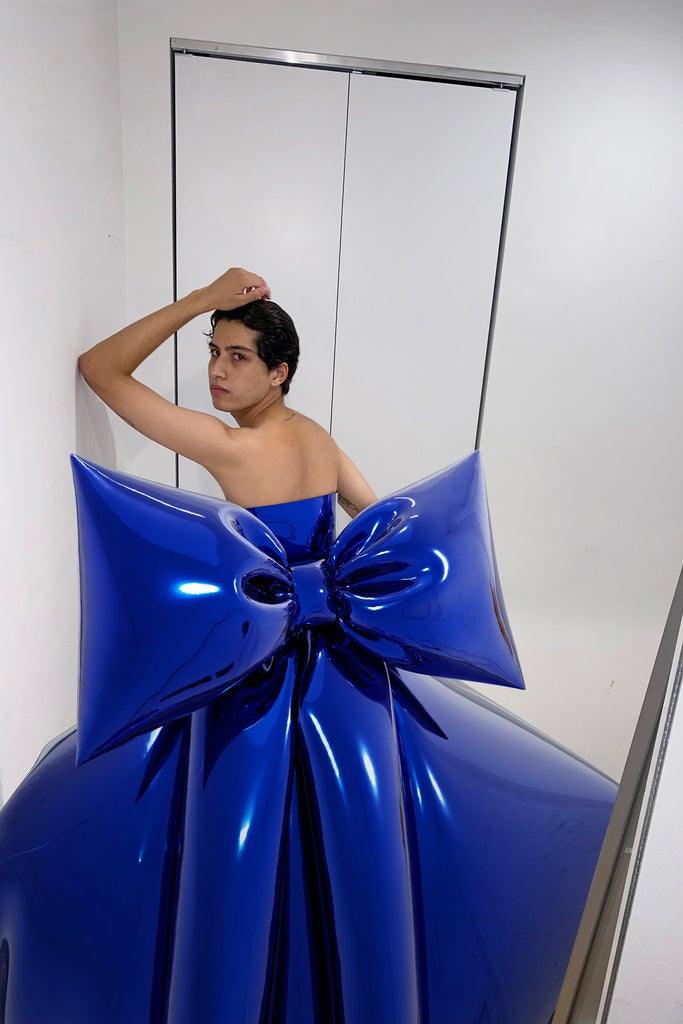Last year, when Pyer Moss’s Kerby Jean-Raymond became the first Black American designer to show during Couture Week, it signaled the beginning of a new — and belated — era for the craft. Instead of showing the expected red carpet-worthy tulle ball gowns and bridal looks, Jean-Raymond sent out playful, over-the-top fashion inspired by inventions from Black entrepreneurs — like the Super Soaker, the bottle cap, and the traffic light — at Madam C.J. Walker’s mansion in New York.
Alongside Jean-Raymond, a new generation of designers are redefining the craft by breaking couture’s tradition of exclusivity and making their own rules in the process. With diversity, sustainability, and technology in mind, they are showing creations that don’t lack in crafts in places ranging from New York to the metaverse. And democratizing the art form along the way.
One of the oldest customs in fashion, couture — by definition, fashion that uses handmade skills and technique — has long maintained its status as a space for the elite, marked by high prices, bespoke clothing, and dresses fit for special occasions most of us will probably never be invited to. While any high-fashion brand can create collections made up of delicate lace and intricate embroidery, only those that meet strict regulations — which include designing made-to-order clothes for private clients and employing 20 full-time technical staff members in their workshop — from the Fédération de la Haute Couture et de la Mode in France can show during the official calendar that, this season, takes place from January 24 to 27.


But emerging couture designers are stepping away from these standards. Back in October, fashion insiders took notice when Vietnamese-American designer Bach Mai presented his debut collection. An alum of Oscar de la Renta and John Galliano’s Maison Margiela, Mai’s resumé gives a hint of what his work looks like: full-skirted gowns in high-low hemlines, peplum strapless tops, and metallic slip dresses that drape over the body like liquid paint. “It’s irreverent, glamour and unabashed femininity that just has always been a part of my universe,” Mai told Refinery29 of his brand. “It’s not only about the aesthetic, but also this appreciation for the craftsmanship to come back.” Impeccable technique aside, what makes Bach Mai’s work innovative is the versatility that allows his designs to bring couture into the everyday. See: the bomber jackets that are paired with full, skirted gowns and leather pencil skirts featuring a too-open-to-walk-in middle slit.
The Texas-born designer has had a lifelong appreciation for couture, one that started when he saw John Galliano’s spring 2004 couture collection and then took a history of couture class in high school. Later, as a student at Parsons The New School For Design, he explored the practice further by delving into the role of technology and the digital age in fashion design. Ahead of his second collection, debuting during New York Fashion Week in February, Mai hopes his work can bring people a deeper appreciation for the work in our increasingly digital and fast-paced industry that churns out trends and clothes in an accelerated cycle. “The role of couture is to preserve the craft, the art of making clothes,” he says. Mai is also emphatic about the ways in which custom-made clothes can help empower its wearer, a phenomenon he says he witnessed growing up in Houston: “There’s something about Texan women and Texas glamour; it doesn’t have to be a Met Gala moment. It can be just a beautiful dress that they feel amazing in and they can have fun.”
For other new-gen designers, sustainability is an essential part of redefining this centuries-old tradition.
Take, for example, London-based Sohee Park who is utilizing deadstock and upcycled materials to create the fantasy-fueled for her eponymous brand Miss Sohee, which will be showing in Milan Fashion Week for the first time in February. Or Johannes Warnke, a Central Saint Martins alum who makes couture-level clothes with textiles dyed by hand in his own garden. In the process, they’re proving that sustainability doesn’t have to mean minimalist clothing. Instead, both Park and Warnke are using color and playful elements and eye-catching techniques — like butterflies, leather gloves, drapery, and asymmetrical designs. “Sustainability should never compromise your designs, but the design shouldn’t compromise sustainability either; it should all be in harmony,” Warnke told Vogue.


The conversations around sustainability in fashion have also brought up the need to reduce the production of real-life clothing, with more brands and designers jumping into the metaverse, where they can operate with a zero-waste model. While many would argue that it’s not craftsmanship in the traditional sense, brands like Tribute — a digital fashion label creating clothes people can only wear on the internet — are on a quest to prove that artificial intelligence and computer-based design should be considered a couture-level skill. “The principles that are in physical fashion, they work in a digital fashion, too,” Gala Marija Vrbanic, co-founder of Tribute, told Refinery29. “We are a fashion brand that is mainly using technology to create a totally new fashion language, so you can compare our pieces to couture.”
Vrbanic says there are many parallels between the way couture brands and Tribute make their clothes, including the long hours it takes to create the voluminous, larger-than-life garments, which have included a digital version of a Jean Paul Gaultier couture look created in collaboration with the house last year. And much like couture, there is a limited number of garments sold for each piece created. They’re just much more affordable, though. While a couture dress might reach six figures, a Tribute gown can cost $150.
By innovating couture practices, new-gen designers are bringing the world of couture into modern day. While the tradition, history, and highly-skilled craftsmanship of haute couture will always have a place, other creatives are proving how the industry can evolve.
“Couture has so many purposes and uses, and one has to think of it as a creative laboratory,” says Mai. “Part of that is preserving craftsmanship, but also highlighting it and elevating it.”
Like what you see? How about some more R29 goodness, right here?

No comments:
Post a Comment